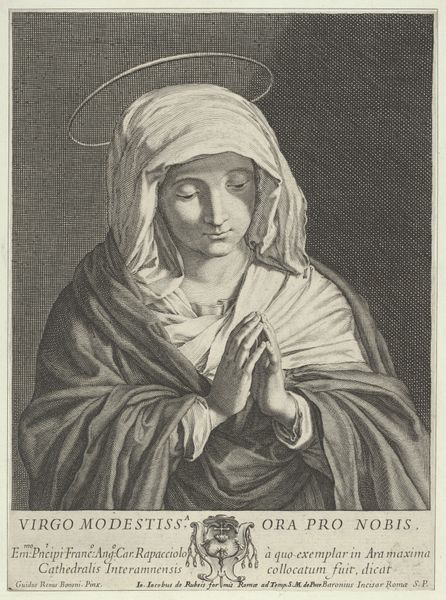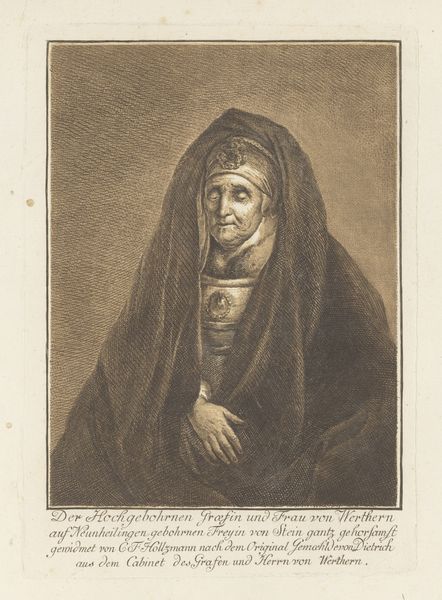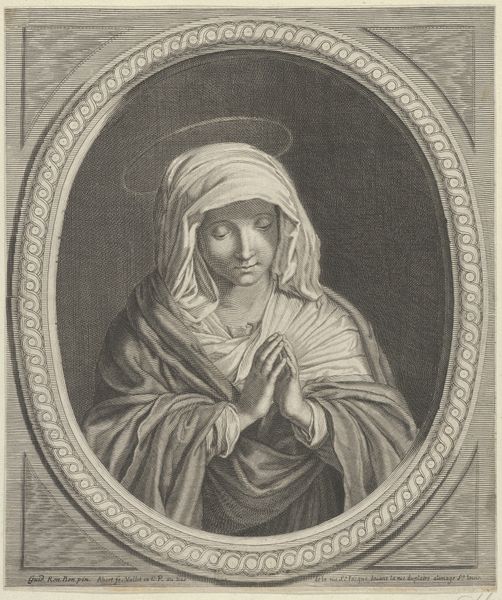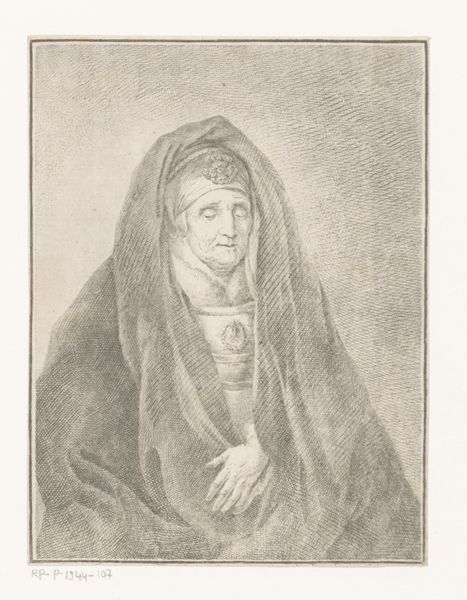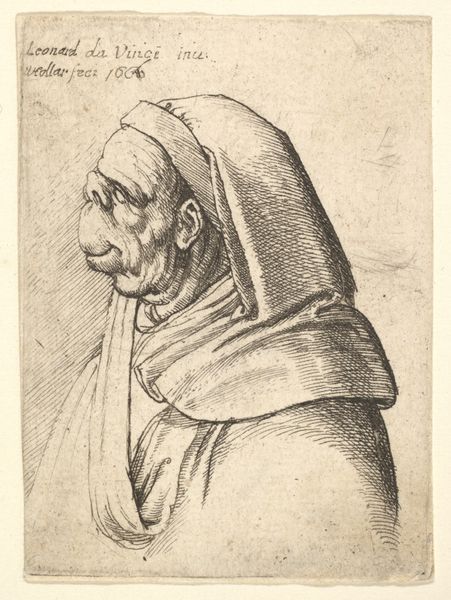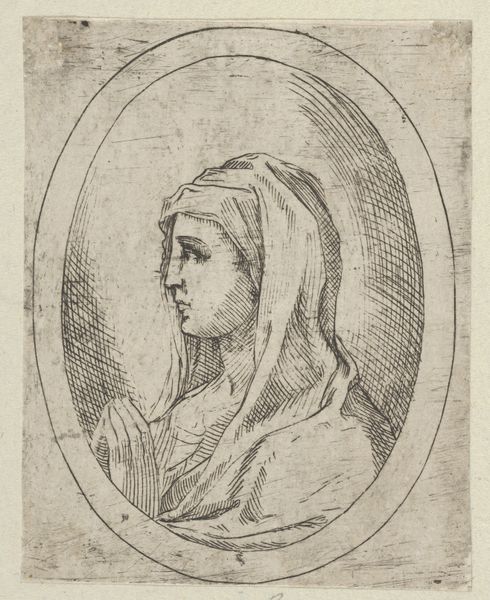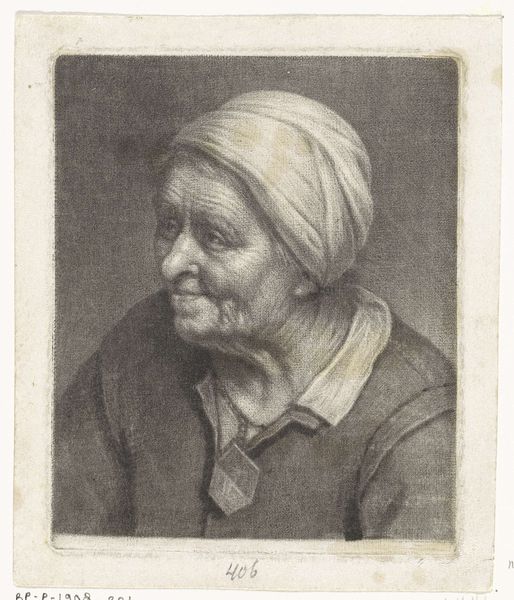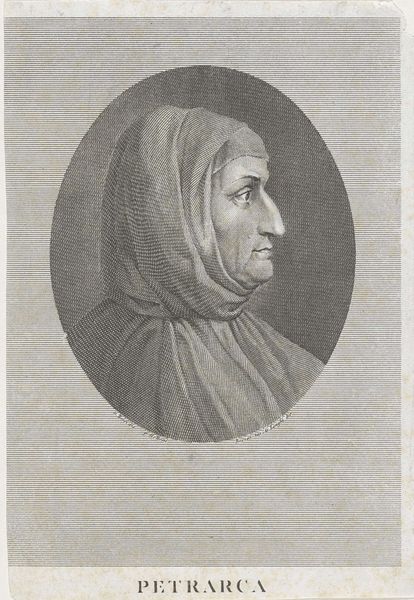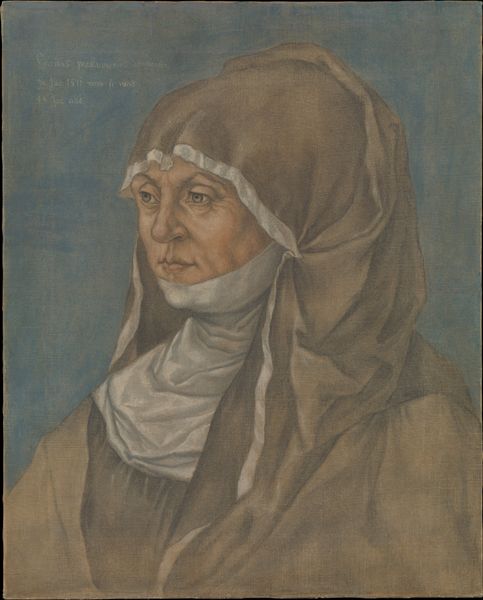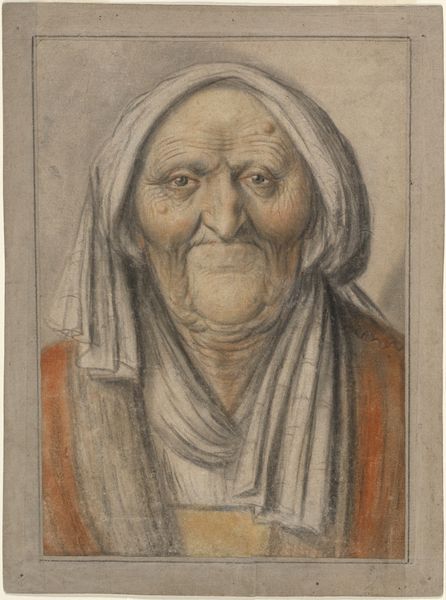
drawing, tempera, etching, charcoal, pastel
#
portrait
#
drawing
#
facial expression drawing
#
self-portrait
#
baroque
#
low key portrait
#
tempera
#
etching
#
caricature
#
portrait reference
#
chiaroscuro
#
animal drawing portrait
#
portrait drawing
#
charcoal
#
pastel
#
facial portrait
#
academic-art
#
portrait art
#
fine art portrait
#
celebrity portrait
Dimensions: height 210 mm, width 163 mm
Copyright: Rijks Museum: Open Domain
Curator: Looking at this work, "Huilende vrouw", which roughly translates to "Weeping Woman", the somber mood hits you immediately, doesn't it? Editor: It certainly does. The etching, dating sometime between 1733 and 1783, arrests my attention through the woman's downcast eyes. The chiaroscuro amplifies the raw emotion, a face etched with what appears to be unrelenting sorrow. Curator: Absolutely, the artist, August Hermann Jakob Degmair, employed dramatic light and shadow to guide our gaze. Notice the subtle gradations within the headdress, how the lines both define form and evoke a sense of ethereality? The technique emphasizes the geometry, framing a very emotional composition. Editor: Precisely, but viewing this piece within a historical frame is vital. How did the role of women at the time contribute to this potent display of suffering, which seems acceptable, if not welcomed in visual arts? Were women encouraged to portray anguish, or was this portrait an avenue for an artist, perhaps even Degmair himself, to capture humanity through this weeping woman's experience? Curator: An intriguing socio-political context! But let’s not forget Degmair's careful attention to detail, like the subtle lines around her mouth and eyes, adding to the work’s semiotic resonance. They articulate a narrative of pain so intense, it feels palpable. It’s as if each line carries a burden. Editor: And I suppose the choice of etching itself has impact. Consider how the reproductive medium made these emotive portraits widely available, essentially distributing grief for public contemplation. What power dynamics were at play in turning private emotion into a public spectacle? Curator: Good points. Analyzing this interplay between line, form, light, and emotion reveals layers of meaning; even in perceived desolation, artistry shines brilliantly, doesn't it? Editor: It’s a stark and enduring reminder of emotional vulnerability that art makes palatable. Let's hope revisiting historical expressions of suffering can build bridges of empathy, even across centuries.
Comments
No comments
Be the first to comment and join the conversation on the ultimate creative platform.

